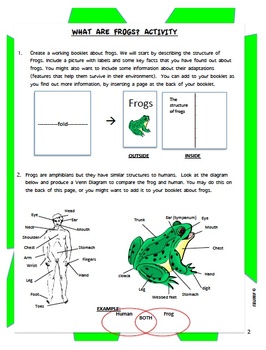

At the opposite extreme of practice, rationalists maintained that the only effective treatments were those derived directly from systematic theories of diseases. Educators feared that a student who could not reason would become a "shoemaker physician who drives into ruts and cannot get out of them." 6 This concern was a byproduct of the dogmatism that plagued medical thought for much of the 19th century, as well as the desire of medical educators to distance themselves from the two dominant dogmas of "empiricism" and "rationalism." Empiricists had insisted that theory had no relevance in medical practice-whatever treatment appeared to cure a particular patient had to be embraced, even if the mechanisms underlying the cure were completely unknown.

It was seen as a place to begin schooling students in the "scientific" method of reasoning, from evidence to theory and back again. While the early 20th-century shift in medical education was not as essentially centered on anatomy as the Renaissance reforms, dissection still played a central role. A major conceptual component of this application was the development of problem-solving skills, and innovative professors advocated for curricula that would teach students not only the retention of anatomical facts but also the ability to reason from structure to disease. Students were expected to enter medical school with a substantial background in the sciences and to apply the scientific method to their medical studies and clinical exercises.

These reforms, epitomized by the legendary Flexner Report in 1910, also included dramatic curricular reforms. In the early 1870s, leading US medical schools initiated reforms that brought medical faculty under the direct control of the university and formalized teaching relationships with major hospitals. 4Īlthough anatomy was not a static field for the following 350 years, the next major shift in thought about medical education occurred around the end of the 19th century, this time with its epicenter in the United States. For these Renaissance medical educators, the dissected cadaver became the definitive text and the students' own observations became a source of authoritative knowledge about the human condition. Anatomy, through Vesalius and his successors, became the fulcrum of a major shift in medical education away from the study of ancient Greek and Latin texts and toward direct observation. Vesalius' most important book, De Humani Corporis Fabrica (On the Structure of the Human Body), drew on the most recent techniques in illustration and helped solidify his pedagogical innovation. One such student, Andreas Vesalius (1514-1564), became so enthusiastic about dissecting that he continued to dissect as a professor and insisted that his students do likewise. Occasionally, exceptional students might inhabit the role of the barber-surgeon in demonstrating structures for the lecturer. Students were completely passive-they engaged the dissected body only through their eyes and their ears, never with their hands. The professor lectured from a chair elevated above the cadaver while lowly barber-surgeons demonstrated various structures at the professor's command. Prior to the mid 16th century, however, anatomical dissection was not physically performed by professors or students of medicine. 1, 2 In science and medicine, as in sculpture and painting, the Renaissance inaugurated a period of renewed interest in the human body and human potential in this world. In the 15th century, however, a small cadre of French and Italian university professors-inspired by the humanist rediscovery of the ancients – began to use cadavers to illustrate lectures from ancient Greek and Latin texts. Anatomical dissection, in particular, was culturally construed as desecration and thus prohibited.
#THE ROLE OF FROG DISSECTION IN EDUCATION PROFESSIONAL#
While the most basic purpose for dissection (to learn structure and function) has not changed since its introduction into the curriculum centuries ago, the attitudes of medical educators toward dissection have evolved according to the particular societal and professional demands of their time.ĭuring the Middle Ages, theologians and philosophers considered the material world (including the frail human frame) to be fleeting and unimportant compared to eternity, and the body was therefore not a focus of rigorous study. No other curricular component has figured as prominently as anatomy in modern medical education. Shared Decision Making and Communication.Scientific Discovery and the Future of Medicine.Health Care Economics, Insurance, Payment.Clinical Implications of Basic Neuroscience.Challenges in Clinical Electrocardiography.


 0 kommentar(er)
0 kommentar(er)
